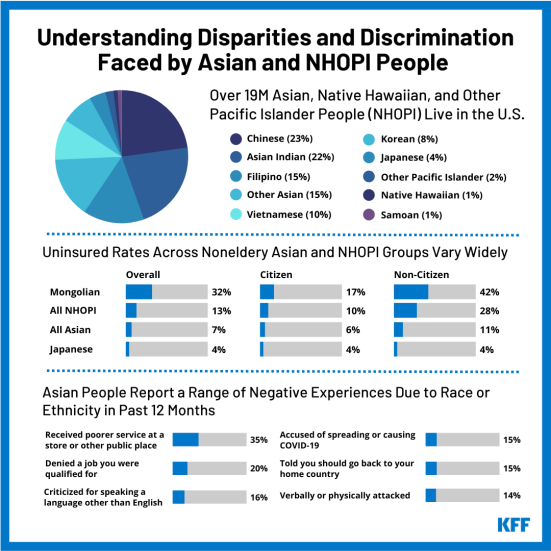Understanding Disparities and Discrimination Faced by Asian and NHOPI People
Asian, Native Hawaiian, and Other Pacific Islander (NHOPI) people are a diverse and growing population in the United States. Asian people are the fastest-growing racial or ethnic group in the United States, with their population increasing 81% from 10.5 million to 18.9 million between 2000 and 2019.
Given the diversity of the population, broad data on Asian and NHOPI people often mask underlying disparities among subgroups of the population. For example, there is a nearly 8-fold difference in uninsured rates among Asian and NHOPI subgroups, ranging from 4% for Japanese people to 32% for Mongolian people. Uninsured rates also vary by citizenship status among Asian and NHOPI people, with noncitizens more likely to lack coverage across groups.
Data are also often missing to identify and address disparities. Enhancing data to better understand the experiences of Asian and NHOPI people is of particular importance at this time, given growing levels of racism and discrimination amid the COVID-19 pandemic, including a significant uptick in hate incidents against Asian and NHOPI people. A KFF survey of Asian community health center patients found that 1 in 3 respondents experienced more discrimination in 2021 than when the COVID-19 pandemic began and that many reported negative experiences due to their race or ethnicity, ranging from receiving poor service to being verbally or physically attacked.
Source
KFF analysis of 2019 American Community Survey 1-yr Public Use Microdata Sample, 2021 KFF survey of Asian community health center patients

